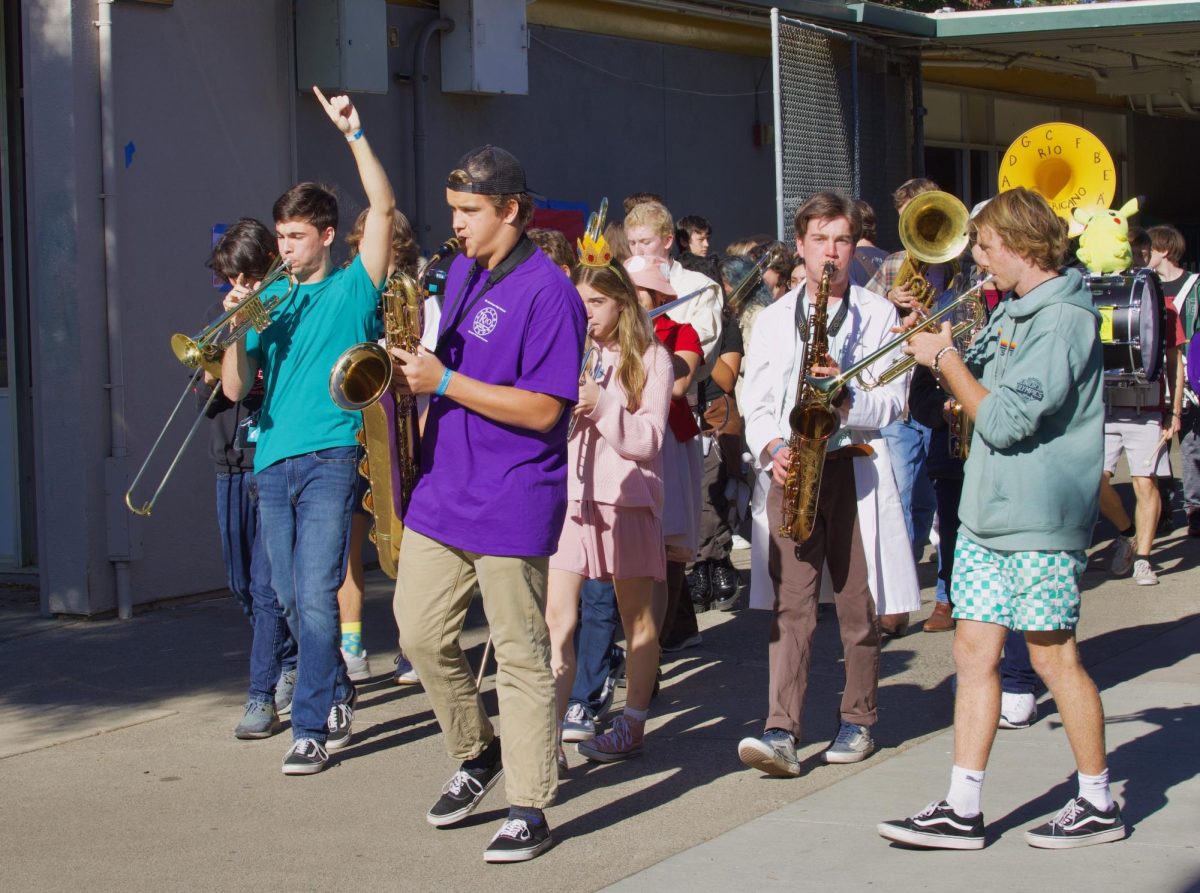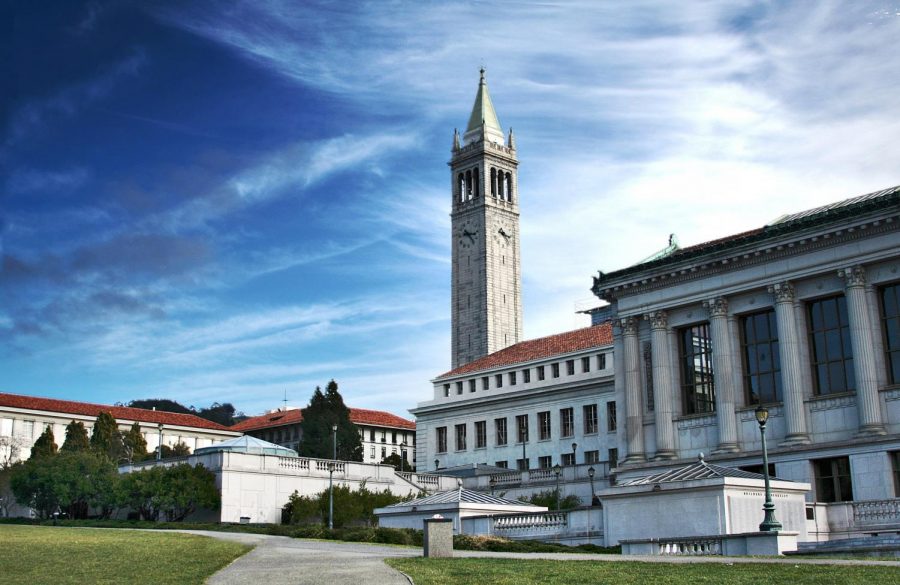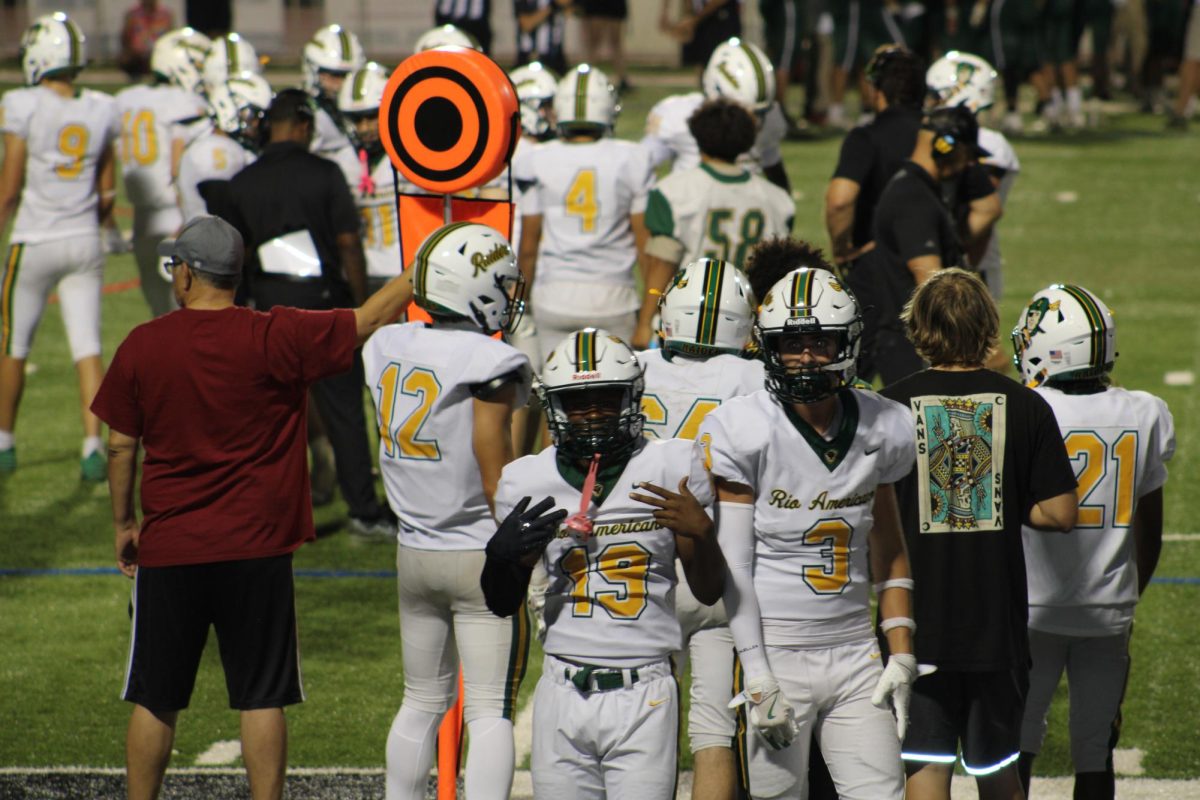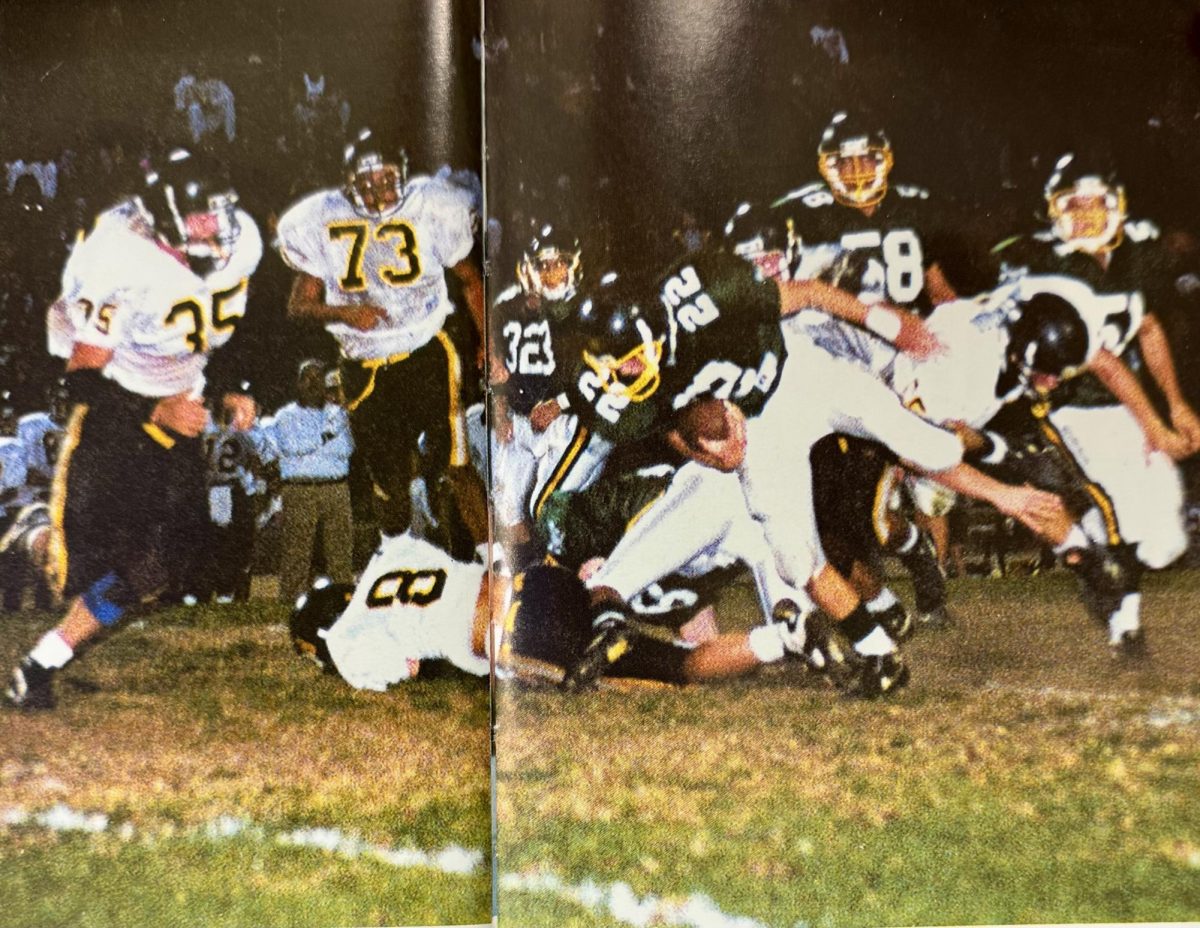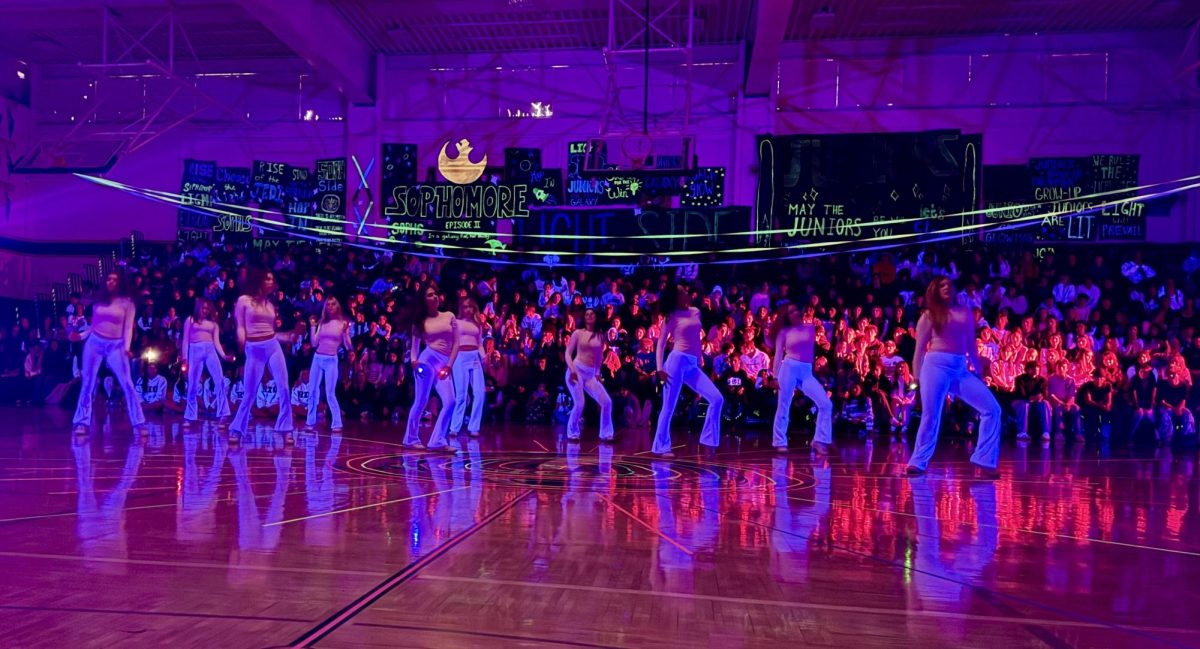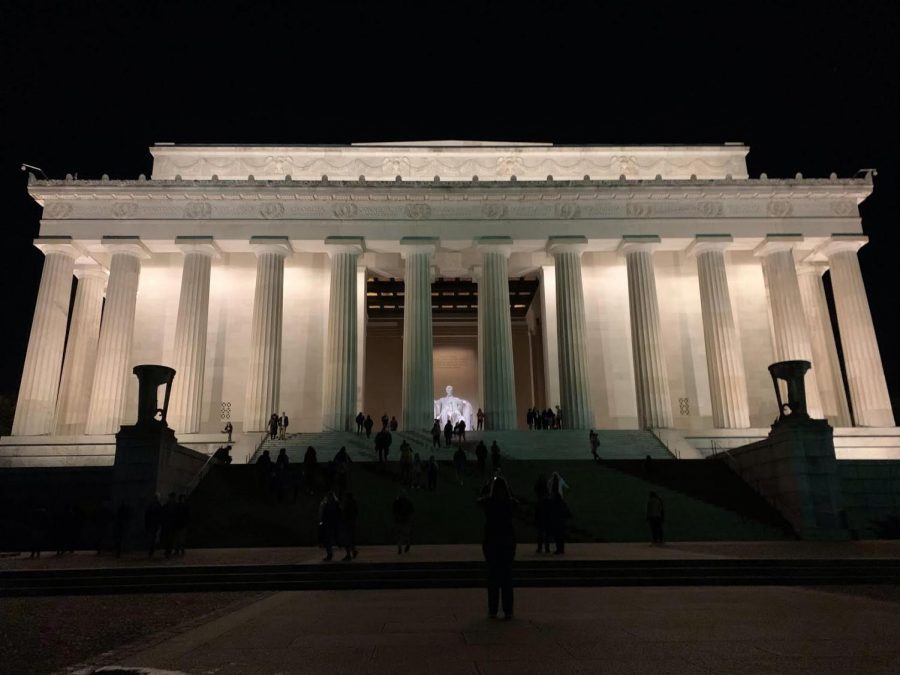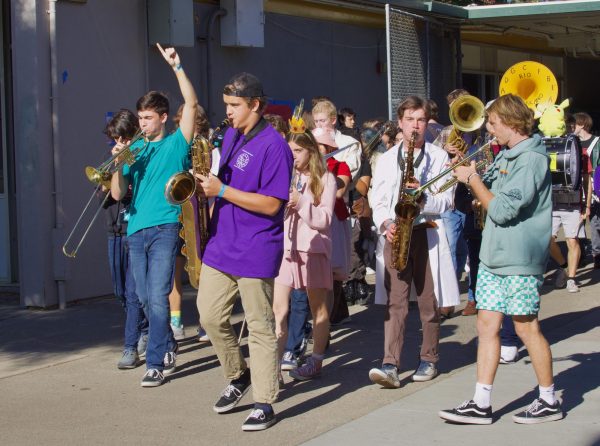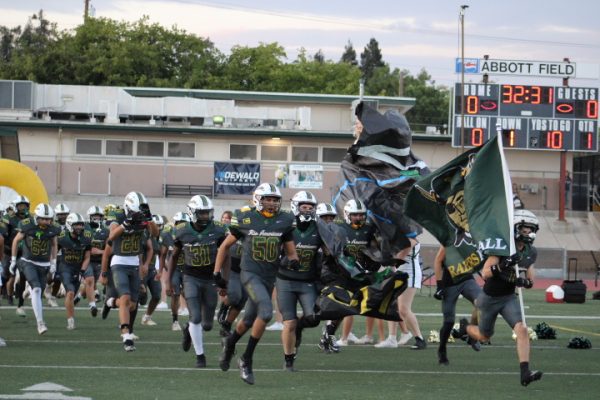Teaching a Dark Past
Photo By Katelyn Newton
The Lincoln Memorial stands guard over Washington D.C. every night. Many remember President Lincoln for the abolition of slavery.
A crucial era in American history, slavery has been an important part of United States curriculum and shapes how students percieve the country.
However, on the 400th anniversary of the first slave being brought from Africa to Virginia, there still isn’t an established way to teach slavery in school to ensure the curriculum is covered sufficiently.
“I think slavery is one of those emotional parts of history that you often can’t read in a book,” said U.S and World History teacher William Taylor. “I don’t think you can teach American history without teaching the history of slavery.”
No nationwide standard for slavery exists, and the curriculum that is taught is based on the public school that one attends.
The guidelines for teaching slavery don’t require teachers to talk about the effects slavery still has today, and as a result the subject as a whole can be glossed over.
“I think it’s difficult to put ourselves in the minds of the people who justified it as well as those who lived it, so I don’t know if slavery can be effectively taught to the extent it needs to be in order to understand how cruel it was,” said Taylor.
African Americans still face socioeconomic and legal challenges in today’s world and a lot of this is due to the discriminatory mindset that was perpetuated during the era in history when slavery was widespread in the US.
“It’s up to the individual teacher on how they want to emphasize it. You can meet the standards and talk about it for four to five minutes or really delve into the issue,” said US History teacher Mr. Blenner.
But, research shows that schools are failing to educate their students about slavery and that US History books present slavery and racism in a false light. Many history books just talk about the topic generally but don’t go into specifics on the sensitive topic.
Research by the Southern Poverty Law Center found that the most widely used textbooks fail to fully explain the extent of slavery. Most textbooks don’t cover the economic profit gained from slavery and the foundation it provided for America.
Slaves were an essential part of the workforce early in the country’s history, and helped to build the economy, especially through the harvest of resources and raw materials.
“It helped to build the economy. Architecturally, I think some of our great monuments that we prize in America like the White House were built by slave labor,” said Taylor. “The nation unfortunately had to have slave labor in order to survive, that was the justification.”
While only four percent of history standards mention slavery as an “institution of power” where the slaveholder acquired profits, 71 percent of teachers highlight this key concept.
Less than half of the teachers surveyed by the SPLC’s report found that students gain insight from reading and interpreting sources from enslaving and enslaved Americans, despite the same four percent of standards that mentioned this teaching strategy.
The 400 year anniversary marks a time for new change in history standards and changing the language of textbooks.
The SPLC’s report showed that an edition of the McGraw-Hill American history textbook portrays the relationship between slavery and racism as “undecided” and decribes the sexual assault of African Americans as “sometimes” rape.
Current high school standards cover slavery as a review topic and don’t spend as much time on the unit in comparison to eighth grade. In fact, only eight percent of high school students nationwide were able to identify slavery as the primary cause of the Civil War.
“As a high school student, I covered the Civil War in much more depth as a historical concept, but we didn’t focus too much on slavery itself,” said US and World History teacher Jason More.
With slavery influencing the fundamnetal beliefs of American culture, teaching the concept in depth is important to spread knowledge about the past and learn from this part of history.
“I think [slavery] is extremely important because it is the begining of understanding what happened to African Americans,” said Blennar. “No other group of people were brought over here against their will.”
Teaching this topic reveals the still existing racial prejudice in American society and highlights the importance of recognizing, not ignoring the past.



